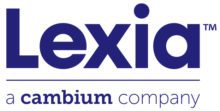The Science of Reading: The Answer to Helping Struggling Readers
Imagine the constant confusion and self-doubt that the students with dyslexia grapple with daily. Reading is an integral part of every subject, but for them, there is a mismatch between how their brains work and how they’re being taught.
Many give up because it seems like even the specialists can’t help them. But students with dyslexia are not alone, according to Lexia Learning Senior Education Advisors, Kimberly Stockton and Octavia Gray-Essex, and Brenda Peters, Director of Assessment and Consultation for ACT Dyslexia Solutions.
In fact, they believe that there is a core problem with how reading instruction is provided in the first place, leading to dysteachia. Stockton, Gray-Essex, and Peters delved into this topic along with solutions during the edWebinar “Dyslexia, Dysteachia, and How Science of Reading-Based Instruction Is the Answer.”
What is Dysteachia?
Dysteachia is the misalignment between students who have been identified with dyslexia and the instruction they receive. Science has shown that the dyslexic brain works differently and that the struggles with reading can’t be dismissed as a lack of motivation or not working hard enough—children with dyslexia cannot change the way they process language.
Moreover, Peters believes that dysteachia is impacting all students who are not reading at grade level because most teachers are using instructional methods that don’t or can’t adjust to students’ different learning needs.
Look to the Science of Reading
Instead, the presenters called for all teachers to implement structured literacy, which is informed by the Science of Reading. The Science of Reading was developed from a multidisciplinary approach, including education, neuroscience, linguistics, and cognitive science, among others.
Essentially, it’s answering the question: How does the human brain learn to read? Structured literacy uses a systematic approach to the components of literacy with purposeful instruction built around students’ challenges and strengths.
Getting to the Root of the Problem
However, the problem is that most institutions of higher education are not teaching the Science of Reading, even for reading specialists and special education instructors. Consequently, in order to address the issue, schools need to implement comprehensive professional development programs.
This is not something that can be done quickly. It can, and should, take years because the evidence-based programs and practices alone are not enough, said Stockton.
Successfully adopting a new program requires an intentional process, and leaders need to think about how to achieve stickiness in their school or district to work toward sustainability. Stockton recommends using an implementation cycle where leaders are constantly shifting between phases from exploration to full implementation.
Without communication with key stakeholders, an implementation team, and getting supports in place, it can take over a decade to integrate the new methods into even half of the programs.
Implementing Structured Literacy: Where to Start
The presenters offered additional advice for those who want to implement structured literacy in their schools:
- First, schools and districts should seek new hires from institutions that prioritize the Science of Reading. If hiring special educators, they must have a practicum experience where they get coaching on how to implement these programs.
- Second, leaders must examine the curricula and make sure they actually support the Science of Reading.
- Next, educators should look at their schedules and adjust, if needed, to allow ample time daily for reading and language arts.
- Finally, and most important—screen students early. Early identification is one of the best strategies for helping struggling readers achieve literacy success.
Learn more about this edWeb broadcast, Dyslexia, Dysteachia, and How Science of Reading-Based Instruction Is the Answer, sponsored by Lexia Learning.
Join the Community
The Science of Reading is a free professional learning community that helps bring knowledge about the science of reading and the plethora of data, information, and products that Lexia Learning provides supporting the evidence.
Lexia®, a Cambium Learning Group company, is the Structured Literacy expert. For nearly 40 years, the company has focused solely on literacy, and today provides science of reading-based solutions for both students and educators. With robust offerings for differentiated instruction, personalized learning, assessment, and professional learning, Lexia helps more learners read, write, and speak with confidence. For more information, visit www.lexialearning.com.
Blog post by Stacey Pusey, based on this edWebinar






Comments are closed.